
Cadland (1825–1837) was a British Thoroughbred racehorse and sire. In a career that lasted from April 1828 to 1831 he ran twenty-five times and won fifteen races, with several of his wins being walkovers in which all of his opponents were withdrawn. In the summer of 1828 he ran a dead heat with The Colonel in the Derby, before winning the race in a deciding run-off. He went on to have a long and successful racing career, winning a further eleven races before his retirement, and developing a notable rivalry with his contemporary Zinganee. Cadland was disappointing as a sire of winners in England and was exported to France, where he was much more successful. He died in 1837.
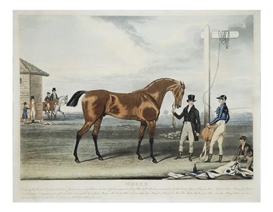
Moses (1819–1836) was a British Thoroughbred racehorse and sire. In a career that lasted from April 1822 to May 1823 he ran five times and won four races. In 1822, when three years old, he won all three of his races and became the second of six colts owned by members of the British Royal Family to win The Derby. His subsequent career was restricted by injuries and he was retired after sustaining his only defeat. He had limited success as a sire of winners and was exported to Germany in 1830.
Cedric was a British Thoroughbred racehorse. In a career that lasted from April 1824 to August 1826 he ran eleven times and won eight races. Cedric was unraced as a two-year-old, but in 1824 he proved himself the best British colt of his generation by winning seven of his eight races including The Derby and the Grand Duke Michael Stakes. After winning a notable match on his first run as a four-year-old he lost his form and was well beaten in his remaining races. He was retired to stud at the end of 1826 but proved to be completely infertile.

Phantom was a British Thoroughbred racehorse and sire. In a career that lasted from April 1811 to April 1813 he ran ten times and won seven races. In the summer of 1811 he proved himself one of the best British colts of his generation, winning the Derby on his second racecourse appearance. He continued to race with considerable success for two more years, mainly in match races. He was retired to stud in 1814 and became a successful sire of winners before being exported to Mecklenburg in 1832.

Tiresias (1816–1837) was a British Thoroughbred racehorse and sire. In a career that lasted from April 1819 to July 1820 he ran thirteen times, all but two of them at Newmarket and won eleven races. Both of his defeats came when he was attempting to concede weight to opponents in match races. His most important win came in May 1819 when he won the Derby. Tiresias's racing career was ended by injury in the summer of 1820, after which he was retired to stud.
Octavius (1809–1831) was a British Thoroughbred racehorse and sire. In a racing career that lasted from April 1812 to May 1814 he ran thirteen times and won four races. He recorded his most important success when winning the Derby. Octavius remained in training for two more seasons, his best subsequent performance coming when he won the Epsom Gold Cup as a four-year-old in 1813. At the end of 1814 Octavius was retired to stud where he had moderate success as a sire of winners.
Pan was a British Thoroughbred racehorse and sire. In a career that lasted from June 1808 to July 1814 he had six different owners, ran twenty times and won nine races. His most important success came on his only appearance as a three-year-old in 1808 when he won the Derby as a 25/1 outsider. Pan won another eight races over the next four seasons, running mainly in match races at Newmarket. He raced for two more years without success before being retired as a nine-year-old in 1814.

Sam was a British Thoroughbred racehorse and sire. In a career that lasted from April 1818 to May 1819 he ran nine times and won three races. In May 1818 he defeated fifteen opponents to record his most important win in The Derby. His only other wins came in a walkover and a match race. After running without success as a four-year-old, Sam was retired to stud but made no impact as a sire of winners.
Rhadamanthus was a British Thoroughbred racehorse and sire. In a career that lasted from April 1790 to 1793 he ran nine times and won five races. In the summer of 1790 he proved himself one of the best British colts of his generation, winning The Derby while still undefeated. He raced until the age of six, winning three further races. All of his runs apart from the Derby were at Newmarket.
Ditto (1800–1821) was a British Thoroughbred racehorse and sire. During a racing career that lasted from May 1803 to April 1807 he was lightly campaigned, running six times in five seasons and winning four races. In the summer of 1803 he proved himself one of the best British colts of his generation, by winning Derby on his only appearance on the season. He went on to win two important races at Newmarket and a King's Plate at Guildford. Ditto was retired to stud in 1808 and had some success as a sire of winners.
Tyrant was a British Thoroughbred racehorse and sire. In a career that lasted from April 1802 to April 1803 he ran four times and won two races. In the summer of 1802 he won the Derby on his second racecourse appearance, but the rest of his form was moderate and he was not considered the best of his generation.
Archduke was a British Thoroughbred racehorse and sire. In a career that lasted from April to October 1799 he ran four times and won two races. On his second racecourse appearance he won The Derby defeating his more fancied stable companion, Eagle. Archduke was beaten in two races at Newmarket later that year and did not race again. He was later exported to stand at stud in the United States.
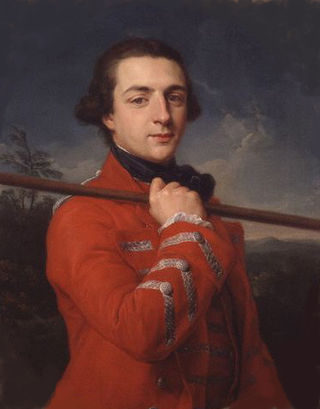
Prunella was a British Thoroughbred racehorse. Raced from 1791 to 1794, she won three races including a Sweepstakes of 200 guineas each at Newmarket. She was retired to stud and became an influential broodmare, foaling Epsom Derby winner Pope and Epsom Oaks winner Pelisse. Her daughters also went on to become top broodmares in their own right. She was owned by Augustus FitzRoy, 3rd Duke of Grafton.
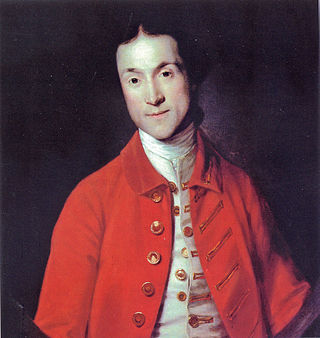
Nike was a British Thoroughbred racehorse. She won three of her five starts, including the Oaks Stakes in 1797. She was owned by Richard Grosvenor, 1st Earl Grosvenor, and later became a broodmare, with three of her foals placing in Classic races.

Pope Joan (1809–1830) was a British Thoroughbred racehorse. She won four of her eight starts before being retired to stud, where she became a successful broodmare. She foaled 1000 Guineas winner Tontine, 2000 Guineas winner Turcoman and Epsom Oaks winner Turquoise. Pope Joan was bred by Augustus FitzRoy, 3rd Duke of Grafton and after his death was owned by his son George FitzRoy, 4th Duke of Grafton.

Penelope (1798–1824) was a British Thoroughbred racehorse. She won sixteen of her twenty-four races, including two Oatlands Stakes, the Jockey-Club Plate and she beat Oaks and Derby winner Eleanor. She was bred and owned by Augustus FitzRoy, 3rd Duke of Grafton. After retiring from racing she became an influential broodmare, foaling Derby winners Whalebone and Whisker and 1000 Guineas winner Whizgig.
Sorcerer (1796–1821) was a British Thoroughbred racehorse. He ran mainly at Newmarket and won fifteen of his twenty-one races, including the October Oatlands Stakes in 1800. After retiring from racing he became a successful stallion and was the leading sire in Great Britain and Ireland for three years. Amongst his progeny were Morel, Maid of Orleans, Wizard, Soothsayer, Sorcery, Trophonius, Comus and Smolensko. He was bred and owned by Sir Charles Bunbury and died in 1821.

Parasol (1800–1826) was a British Thoroughbred racehorse. In total she won twenty of her thirty-five races, including two Newmarket First October King's Plates, the Jockey-Club Plate and a match race against Derby winner Cardinal Beaufort. Her only race away from Newmarket was for her début, in the Oaks Stakes in 1803. She was bred and owned by Augustus FitzRoy, 3rd Duke of Grafton. As a broodmare she foaled the stallion Partisan, 2000 Guineas winner Pindarrie and Pastille, who won both the 2000 Guineas and the Oaks.
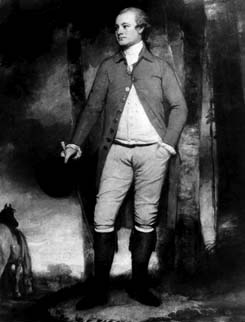
Bridget (1776–1798) was a British Thoroughbred racehorse who won the inaugural running of the Oaks Stakes in 1779. She was bred and owned by Edward Smith-Stanley, 12th Earl of Derby, for whom she produced five foals as a broodmare.
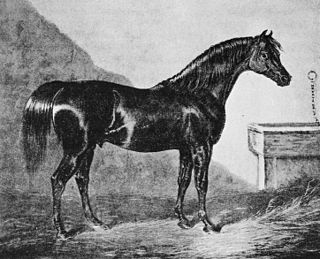
Walton was a British Thoroughbred racehorse. He raced until he was eight years old, winning sixteen of his twenty five races. His first race was in 1802, with his first big win, the Third Class of the Oatlands Stakes, coming in 1803. He went on to win eight King's Plates and recorded wins over several leading racehorses of the time. He was owned by Sir Hedworth Williamson throughout his racing career. Walton later became a successful stallion and was champion sire of Great Britain twice. He sired the Derby winner Phantom, 2000 Guineas winner Nectar and St. Leger winner St Patrick.











